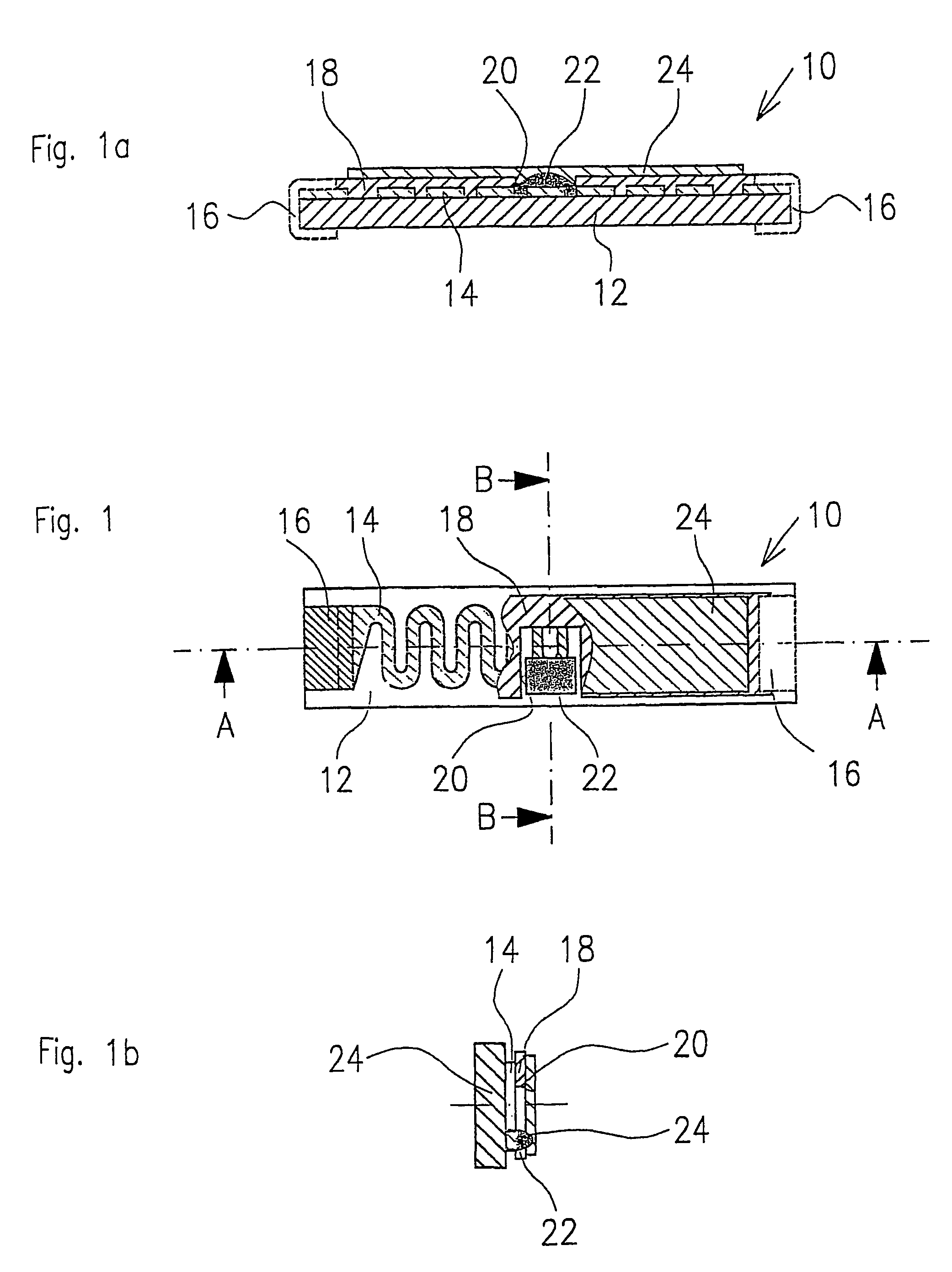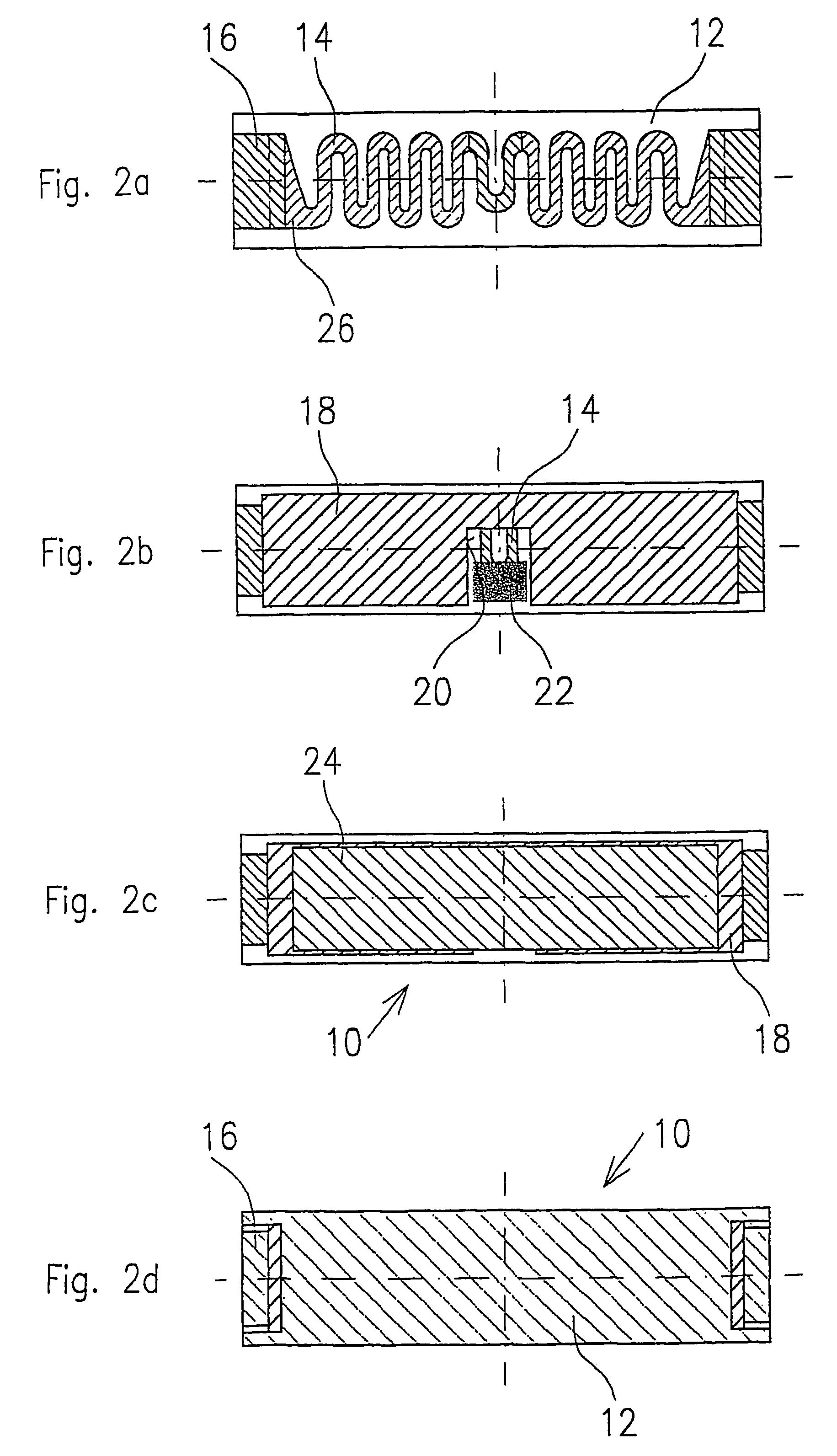Fuse component
a technology of fuse components and components, applied in the field of fuse devices, can solve the problems of poor thermal conductivity, general electrical insulation, conductive materials (such as metals), etc., and achieve the effects of large cross-sectional area, high current capacity, and large width
- Summary
- Abstract
- Description
- Claims
- Application Information
AI Technical Summary
Benefits of technology
Problems solved by technology
Method used
Image
Examples
Embodiment Construction
[0028]FIG. 1 is a schematic plan view of a fuse device 10 in accordance with the invention, the upper layers being partially cut away for reasons of visualisation. FIGS. 1a and 1b are sectional views of the fuse device 10 shown in FIG. 1, the section being on the line A-A and B-B, respectively. The fuse device 10 is produced on a substrate 12. In the preferred embodiment, the substrate comprises an Al2O3 ceramic with a thickness between 0.5 mm and 0.7 mm, for instance 0.63 mm. The substrate 12 illustrated in FIG. 1 of the preferred exemplary embodiment is about 10 mm long and 2.5 mm wide. The illustrated substrate chip is preferably cut out from a larger substrate wafer, whereby a plurality of fuse device chips arranged in rows and columns can be fabricated simultaneously on the substrate wafer.
[0029]Applied to the upper surface of the substrate 12 shown in FIG. 1 is a thick film fusible conductor 14. The fusible conductor 14 comprises a layer, which is applied by screen printing an...
PUM
 Login to View More
Login to View More Abstract
Description
Claims
Application Information
 Login to View More
Login to View More - R&D
- Intellectual Property
- Life Sciences
- Materials
- Tech Scout
- Unparalleled Data Quality
- Higher Quality Content
- 60% Fewer Hallucinations
Browse by: Latest US Patents, China's latest patents, Technical Efficacy Thesaurus, Application Domain, Technology Topic, Popular Technical Reports.
© 2025 PatSnap. All rights reserved.Legal|Privacy policy|Modern Slavery Act Transparency Statement|Sitemap|About US| Contact US: help@patsnap.com



